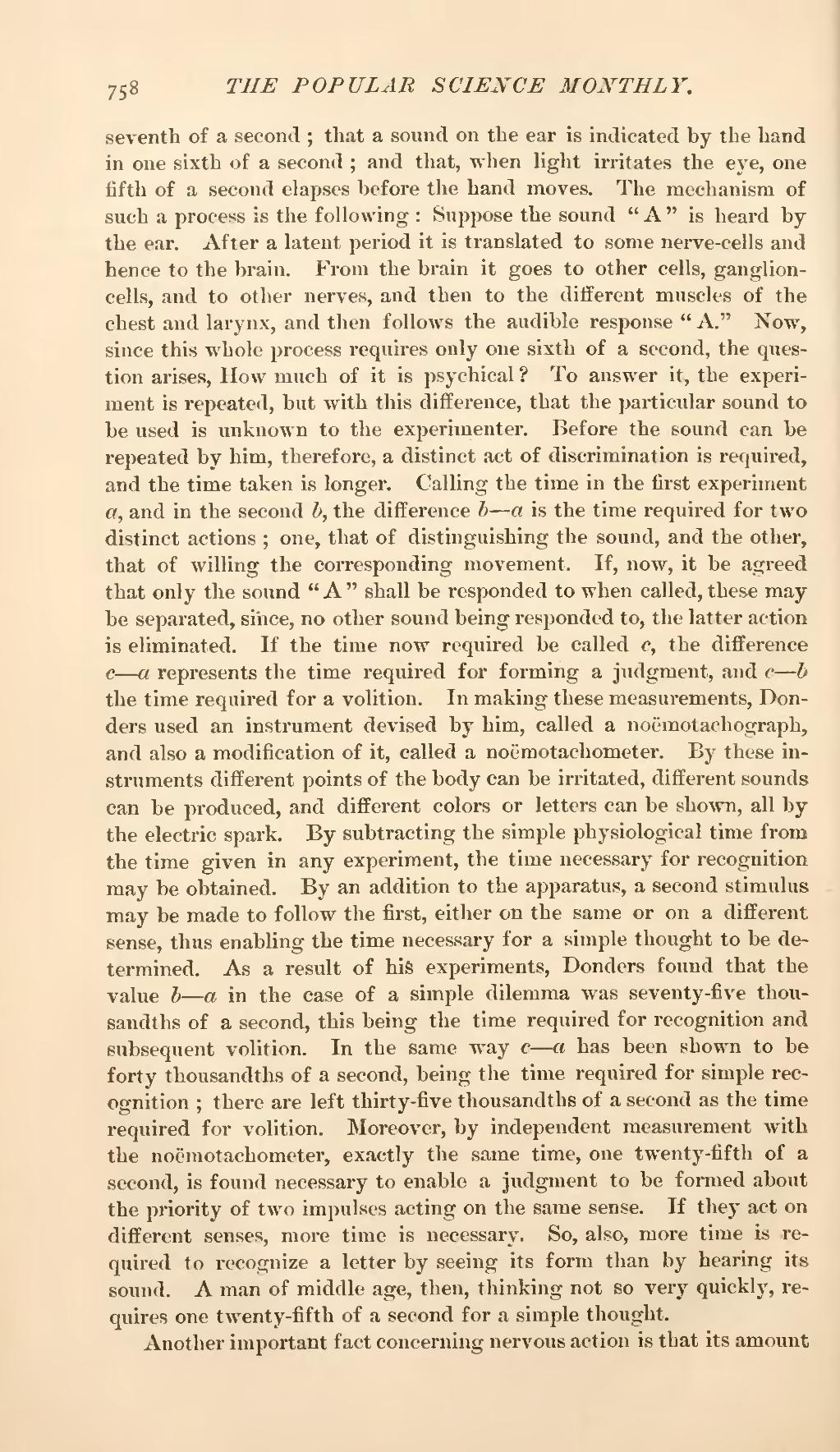seventh of a second; that a sound on the ear is indicated by the hand in one sixth of a second; and that, when light irritates the eye, one fifth of a second elapses before the hand moves. The mechanism of such a process is the following: Suppose the sound "A" is heard by the ear. After a latent period it is translated to some nerve-cells and hence to the brain. From the brain it goes to other cells, ganglion cells, and to other nerves, and then to the different muscles of the chest and larynx, and then follows the audible response "A." Now, since this whole process requires only one sixth of a second, the question arises, How much of it is psychical? To answer it, the experiment is repeated, but with this difference, that the particular sound to be used is unknown to the experimenter. Before the sound can be repeated by him, therefore, a distinct act of discrimination is required, and the time taken is longer. Calling the time in the first experiment a, and in the second b, the difference b—a is the time required for two distinct actions; one, that of distinguishing the sound, and the other, that of willing the corresponding movement. If, now, it be agreed that only the sound "A" shall be responded to when called, these may be separated, since, no other sound being responded to, the latter action is eliminated. If the time now required be called c, the difference c—a represents the time required for forming a judgment, and c—b the time required for a volition. In making these measurements, Donders used an instrument devised by him, called a noëmotachograph, and also a modification of it, called a noëmotachometer. By these instruments different points of the body can be irritated, different sounds can be produced, and different colors or letters can be shown, all by the electric spark. By subtracting the simple physiological time from the time given in any experiment, the time necessary for recognition may be obtained. By an addition to the apparatus, a second stimulus may be made to follow the first, either on the same or on a different sense, thus enabling the time necessary for a simple thought to be determined. As a result of his experiments, Donders found that the value b—a in the case of a simple dilemma was seventy-five thousandths of a second, this being the time required for recognition and subsequent volition. In the same way c—a has been shown to be forty thousandths of a second, being the time required for simple recognition; there are left thirty-five thousandths of a second as the time required for volition. Moreover, by independent measurement with the noëmotachometer, exactly the same time, one twenty-fifth of a second, is found necessary to enable a judgment to be formed about the priority of two impulses acting on the same sense. If they act on different senses, more time is necessary. So, also, more time is required to recognize a letter by seeing its form than by hearing its sound. A man of middle age, then, thinking not so very quickly, requires one twenty-fifth of a second for a simple thought.
Another important fact concerning nervous action is that its amount
